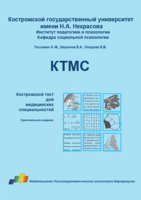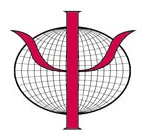KTMS
The KTMS is the Kostroma Aptitude Test for Medical Studies.
It is supposed to help sort out apt students for medical studies.
The KTMS was developed following American and European performance tests and complies in its construction with the TMS, that has been successfully applied by German universities for decades.
The KTMS is no translation or adaptation of the TMS to Russian standards but is a completely new creation with new tasks that have been developed following the principles of classical test construction.

The development of the KTMS will be based on the ÜTMS that was developed by Hans-Werner Gessmann. This again is not a mere translation or adaptation of the TMS for Russia, but a necessary redevelopment.
The Test for Medical Studies (TMS) is a study aptitude test. It was developed on behalf of the Kultusministerkonferenz (1978) in order to measure possible dimensions of the aptitude for university studies, in order to gather a reliable admission criterion, apart from the grade on the Abitur that could be applied in regard to the Numerus clausus.
The goal was to predict the students’ individual aptitude for university studies as objectively and reliably as possible by using a psychological, discipline-specific aptitude test. Using only the grade on the Abitur as an admission criterion is problematic as it does not adequately address the different assessment criteria between states, courses of education, genders, etc. causing possible distortions of the results. Applying a compensation factor in order to balance the different grade point averages in different states has its limitations. The test is independent of such differences and thereby improves the chance of equal opportunities when it comes to university admission.
Between 1986 and 1996 the TMS has routinely been used to sort out applicants who wanted to study medicine at university. It has been constantly updated and every year a new version of the test was used. The test was abolished as the number of applicants sank to a level where it was not significantly higher than the number of available slots. The circumstances did not justify the enormous effort of the test any longer.
As this trend was reversed, the test was reinstated. In the winter semester of 2006/2007 the University of Leipzig has for the first time used their own selection procedure. In 2007/2008, applicants in Baden-Württemberg also had to pass the selection procedure. Since 2008 test results from these selection procedures are not only taken into account by the aforementioned universities, but also by the University of Lübeck.
The translation of the ÜTMS has to be tested on a random sample of Russian students. We will test the students of the medical university that have just begun their studies. For the first test run, we only need a small sample. After that, we will on the item analysis. We will test the difficulty level of the items, discriminatory power, selection indicator values, and the homogeneity of the test. For this, we will apply different statistical methods. (For the further development of the test it is important to examine objectivity, reliability, and validity. This is the topic of a separate scientific paper.) Due to the results, the test is revised and a second test run is carried out. Should the results comply with the necessary criteria after the second item analysis, the development of the KTMS can be finalized. Furthermore, it is to be tested which variables have an impact on the test results. With this, the thesis is complete.
In remaining scientific work we will try to find the connection between good results in the test and success in the course of the studies. In case this connection exists, we can forecast the success rate before the medical students even start their studies. Thus, this test can help sort out the most promising students for the few slots available.
